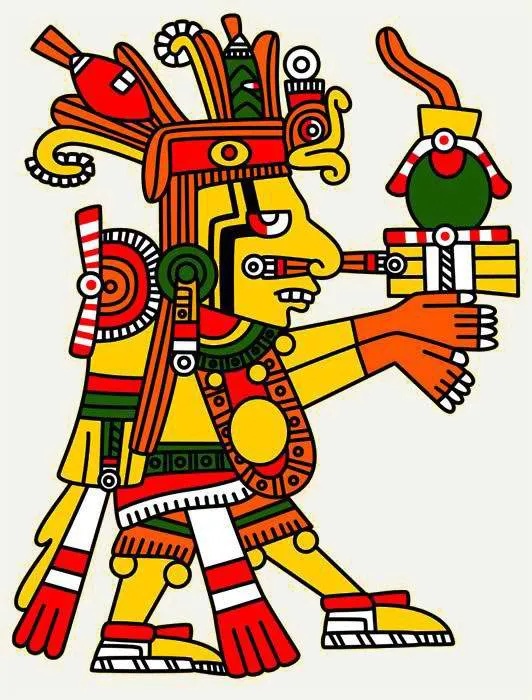Symbol of sustenance, good fortune.

Centeotl, also known as Centéotl, was the Aztec god of maize (corn), representing agriculture, fertility, and the sustenance of life. He played a crucial role in the Aztec pantheon due to the central importance of maize as a staple crop in Mesoamerican civilizations. Maize was not only a primary food source but also a symbol of life and fertility, making Centeotl a deity closely associated with the nourishment and sustenance of the people.
Centeotl was often depicted with symbols related to maize and agriculture. His imagery frequently included maize ears or cobs, sometimes even showing him as a young man with corn sprouting from his head, symbolizing growth and fertility. Additionally, Centeotl was sometimes portrayed in a yellow hue, further connecting him to the golden color of ripe maize.
As the son of the earth goddess, Tlazolteotl, and the solar deity, Piltzintecuhtli, Centeotl occupied a significant place in the agricultural and seasonal cycles of the Aztec world. Festivals and rituals dedicated to Centeotl were important for ensuring a good harvest and for celebrating the vital role of maize in the sustenance of life. His worship underscored the deep connection between the Aztec people, their agriculture, and their gods.
